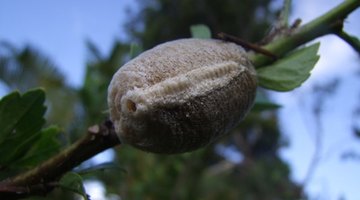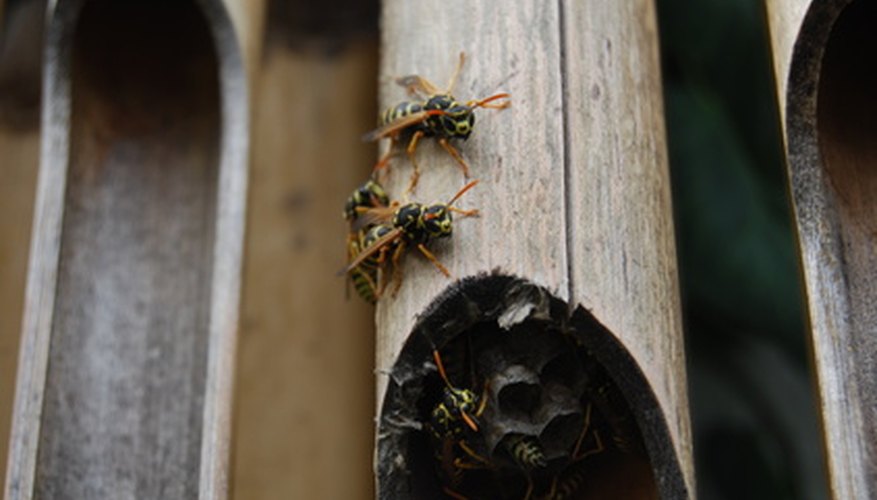Wasps can be incredibly annoying, especially when they destroy your wooden banisters, fences or the siding of your house. Although not impossible to remove safely, many people fear doing the work themselves. Safety measures can prevent the serious consequences of wasp stings that cause discomfort, pain or even death. Additionally, the paper wasp, one of the most common wood-chewing wasps, is less threatening than yellow jackets or hornets.
- Wasps can be incredibly annoying, especially when they destroy your wooden banisters, fences or the siding of your house.
- Although not impossible to remove safely, many people fear doing the work themselves.
Shut any open doors or windows to the building from which you want to remove the wasps.

Locate the wasp nest. Although certain actions may help reduce wasps, the only sure way to rid yourself of wasps is to destroy their home. One of the most common wood-chewing wasps, the paper wasp builds umbrella-shaped nests that drop from overhangs.
Stand 6 m (20 feet) away from the wasp nest, holding the spray can of insecticide that you can purchase from a DIY centre. Make sure you stand close to a door. After spraying the nest, you may need to run inside your house to avoid being stung. Do not stand under the wasp nest, as falling wasps can sting you.
- Stand 6 m (20 feet) away from the wasp nest, holding the spray can of insecticide that you can purchase from a DIY centre.
Spray the nest to complete saturation, and run, safely, inside your house.
Knock down the nest, one to two days later. By this point, the destroyed nest shouldn't house any more wasps. Leaving the nest may lead to problems from other, scavenger insects.
TIP
Spray during the daytime to reduce stinging risks because in the daytime, wasps are more visible.
WARNING
Always take great care when treating for wasps. Their sometimes life-threatening stings can cause a serious allergic reaction. If you think you may have an allergy to wasp stings, contact an exterminator to deal with the problem. Do not use gasoline or other flammable material to get rid of wasps. These materials can cause groundwater toxicity. Additionally, the ignition of these materials can cause fires.
